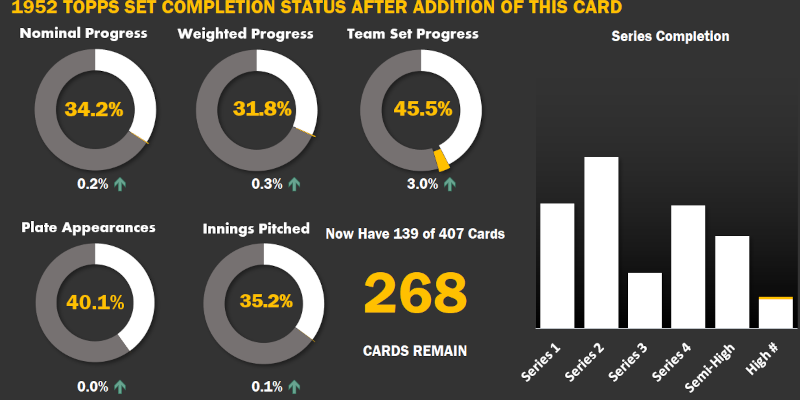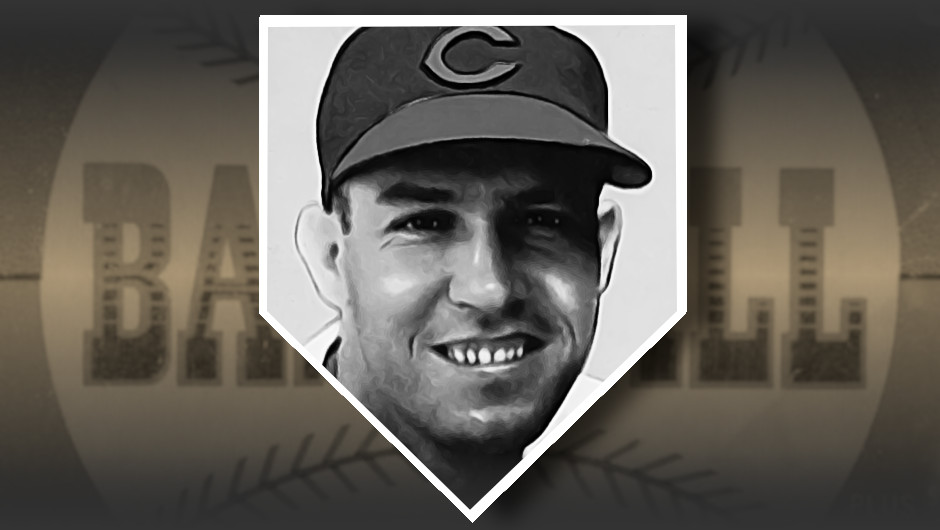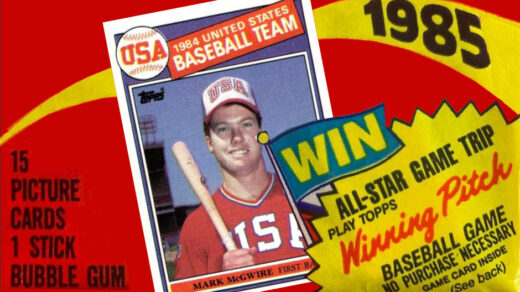A good number of Pittsburgh Pirates players appearing in the 1952 Topps set are pictured in an odd setting. They appear to be in a public park or at a backyard cookout. This effect is clearly visible in (what’s left of) my Woody Main card. I imagine a photographer saying, “Main! Set that burger down for a second and let me get a picture. Scoot over a bit near the fence so we don’t get the pool float in the background.”
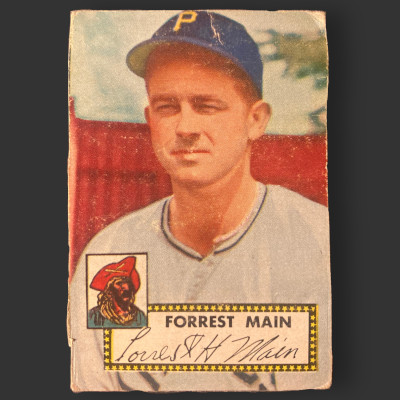
It turns out that idea wasn’t far off the mark. Main’s photo was taken at spring training, and Pittsburgh practically went to the Californian’s back yard to prepare for the season. In 1952 the team wrapped up a multiyear period in which spring training was conducted at a public park in San Bernardino. Grandstands and limited facilities were constructed to accommodate pro baseball in a Depression Era public works project. Players were greeted with wooden crates of locally grown oranges and would find a good deal of furniture was provided by the discarded crates of previous years. A distinctive wooden fence ran along the outfield wall, followed by an assortment of SoCal trees and Perris Hill. This same backdrop can be seen in about a dozen Pittsburgh cards scattered throughout the set.
Perris Hill remains a public park today. A new ballpark, Fiscalini Field, now stands on the site of the Pirates’ original practice area. College and youth league games continue on a regular basis, and the area is popular for its playground, public pool, and picnic facilities.
Woody’s Career Pretty Much Took Place in 1952
Main didn’t stay with the parent club very long. He spent almost a decade in the minors and Marines and got a couple short looks at the end of the 1948/1951 seasons. His big chance came in 1952 when he pitched 75% of his lifetime innings. The Pirates largely used him in relief, where he put middling numbers. This being the Pirates, that was actually a net improvement compared to the rest of the pitching staff. He worked a total of 4 more MLB innings after his 1952 baseball card appeared and was quickly gone from the game. Topps used another Perris Hill photo of Main in its follow up 1953 edition.

Fun Fact: Hall of Fame slugger Eddie Mathews represents 5% of Main’s career strikeout total.
The Card
The choice of this particular card to represent Main in my in-progress ’52 set is the result of balancing availability with budget constraints. Someone haphazardly removed the card’s white borders, a fate that many cards from the set seem to have met. I generally shy away from these cards but will at least reconsider that stance when a high number common is involved.
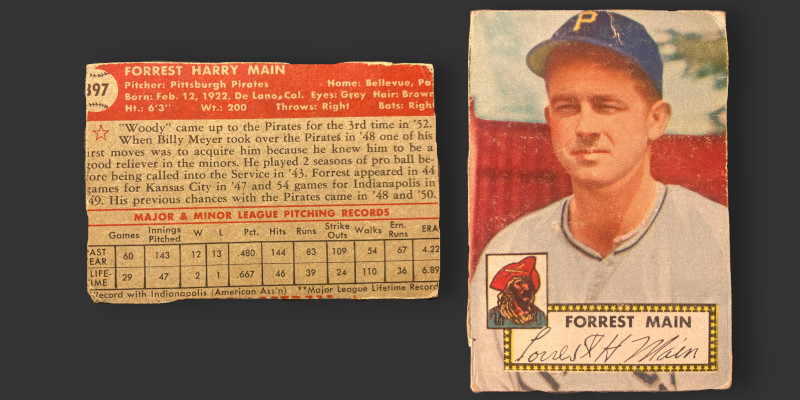
I honestly don’t know if this will be the final “mini-1952” added to my set. If I eventually find myself scowling at it I will know these ultra-trimmed examples are not for me and will avoid them. If not, I may have found a way to add high numbers without breaking the bank.
